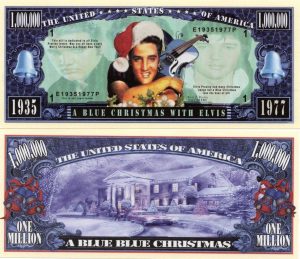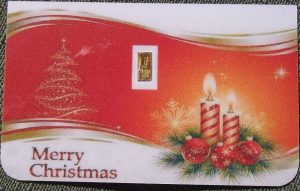Apr 24, 2018 | coins, fun, values, video
Passing the time after 10:00 PM on Monday night, the television found its way to the History Channel for the return of Pawn Stars, the reality show about a pawn shop in Las Vegas. While the first show of the hour was just interesting it was the second show that started at 10:33 PM that was more intriguing.
Although the show was marked as “NEW” on the visual guide, it first aired last January. To make sure I was able to study the coins more, I found the episode on the History Channel website. It is also available on YouTube at https://youtu.be/yTKbcAKbQtU. (embedded below)
Opening the show, a seller name Walter walked in with two rare coins. The first coin was a 1792 Half Disme and the other a silver Libertas Americana. Two coins dating back to the earliest days of the country’s history.
If you recognize Walter his full name is Walter Husak. In 2008, Husak sold his extraordinary collection of large cents at an auction held during that year’s Long Beach Expo. For this show, he was selling the two coins.
The 1792 Half Disme was graded MS-65 by Numismatic Guarantee Corporation who lists the coin as a TOP POP, meaning no coin has graded higher. There are only two half dismes graded MS-65 by NGC and one appeared on Pawn Stars.
-

-
1792 Half Disme obverse graded NGC MS-65 TOP POP (screen grab)
-

-
1792 Half Disme reverse graded NGC MS-65
(screen grab)
The Libertas Americana is one of the rare silver versions and was graded MS-61 by Professional Coin Grading Service
-
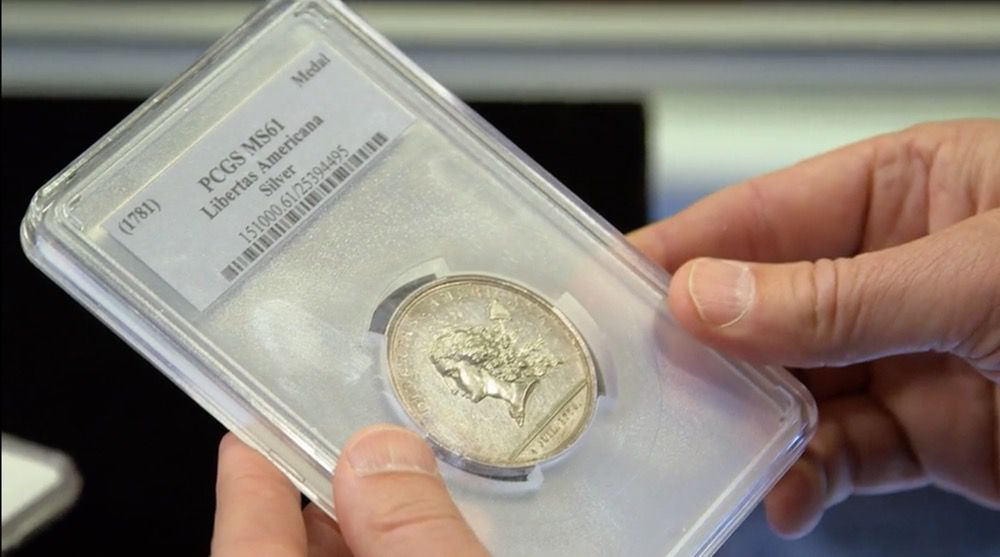
-
obverse of the silver Libertas Americana graded MS-61 by PCGS (screen grab)
-

-
Reverse of the silver Libertas Americana
(screen grab)
As with a lot of these purchases, Rick calls in an expert for assistance. This time, the expert is Jeff Garrett, the founder of Mid-American Rare Coin Galleries in Lexington, Kentucky and immediate past president of the American Numismatic Association.
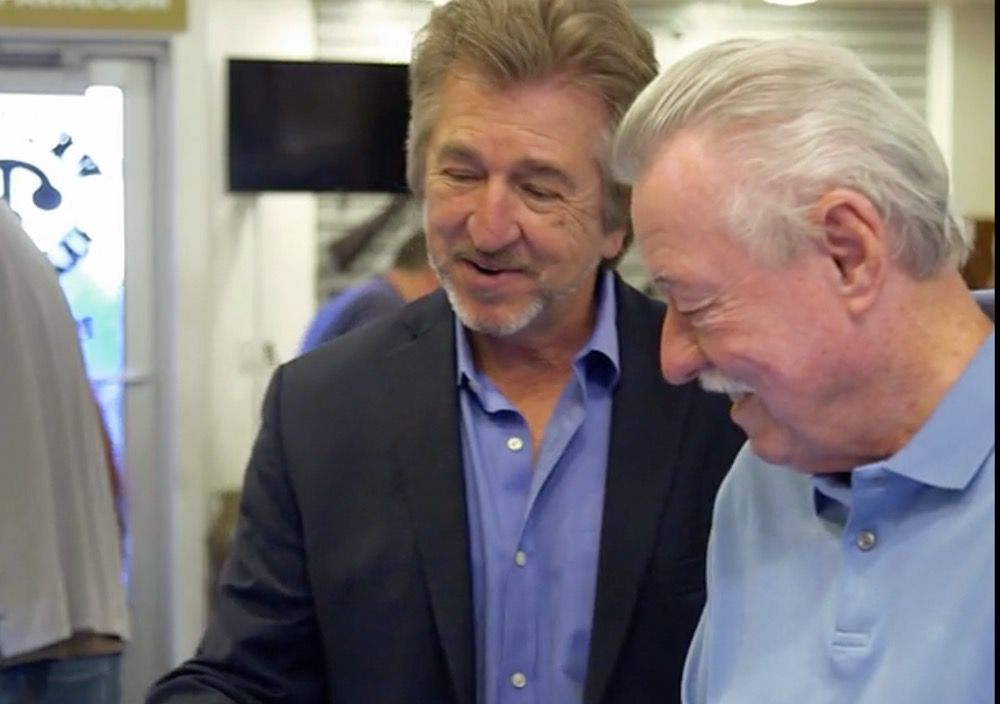
Jeff Garrett stands next to Walter Husak as they examine the Half Disme and Libertas Americana on Pawn Stars (screen grab)
I noted that Garrett’s firm is in Lexington since the location of the television show is in Las Vegas. While doing a little online investigation into the prices and to see if there was more information, there was a note on the Collectors Universe forums suggesting that the segment was not a reality, but it had been staged.
According to user “cardinal,” he wrote:
Jeff Garrett is one of the experts that gets brought in to evaluate numismatic items for the show. For this specific episode, Jeff was looking for both a half disme and a Libertas medal, and Jeff was able to locate them and had the respective owners’ permission to have them appear on the show. The half disme is pedigreed to the Garrett Collection, and the silver Libertas medal was one that Jeff Garrett had sold some years back. (This particular Libertas medal has been in the Cardinal Collection for the past 6 years.)
I believe Ccardinal is the anonymous person behind the Cardinal Collection who has collected some of the finest coins in the PCGS registry.
Following a discussion on the actual Libertas Americana used for the show, he ends with:
During the show, the half disme was a no-sale. The Libertas medal was shown as sold at $150K on camera. That being said, the piece was not actually sold, even though Rick actually did want to buy it for $150K.
I have heard stories as to how some segments are real and some are staged. When I spoke with Charmy Harker about her appearance in 2012, I was under the impression that her attempt at selling a World War II-era aerial bomber camera was not overly staged. That does not seem to be the case in this episode.
My one complaint is that these two esteemed numismatists mispronounced the name of the coin. Everyone kept pronouncing disme as “DIZ-ME.” In reality, disme is pronounced as if the “s” was not included in the word. Disme is derived from the French term for tenth but pronounced dime—which is why the “s” was dropped after the first issues of 1792 coins.
Oh well… it was a fun segment to watch.
Apr 14, 2018 | currency, foreign, fun
When I go picking I look for the unusual. Whenever I walk into an estate sale or any other picking opportunity, I will find the most remote area and work from there. In most homes, I head for the basement and the garage. These are the places that people store things they did not want to throw out, It is where I find the most unusual items.
Lately, I have been finding that buying old books can be just as interesting. Aside from cultivating a small clientele of interested customers, I have found that people hide things in books, especially old books.
Not long ago I visited a difficult to find estate sale hoping to find something interesting. I did not find much but there were some books that had possibilities. At $2 each, I felt I could find a few gems.
Based on the type of books I found, the owner had a passion for European history. In addition to travel books and books about European influence on United States society, there was a two-volume set written in French.
My French is good enough to figure out that the books were published in 1899 Paris and were from the first printing of the first edition. For book collectors, once the book meets the condition test, these are the books they like. Since they were in good condition with nice covers I added them to my pile.
This past week I was going looking through the box of books. As I was cataloging them I will either scan the pages or fan them to see if I find something. Within these two volumes of French language books on European history, I found money.
I was a little surprised to see notes from the Central Bank of Egypt. Seven different Egyptian notes, mostly from the late 1980s. The face value of the notes totals 13 pounds.
-

-
Obverse of the Egyptian banknotes found in a French language book about European history.
-
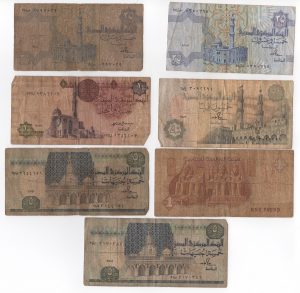
-
Reverse of the Egyptian banknotes found in a French language book about European history.
Aside from being mostly in horrible condition, I do not recall any indication of books, magazines, or catalogs referencing Egypt of the Middle East or North Africa.
The best-looking note is a 25 piastre note (Pick #57a) but it looks water damaged. It was probably water damaged before being stored between the pages of the book since the book shows no effects from the storage.
Although the notes can be worth $5 for the 25 piastre note to $25 for the 5-pound note, that would be if they were in better condition. I am not sure the entire lot is worth $5!
The moral of this story is that if you go picking at estate sales, check the bookcase. You never know what might fall out when you fan the pages.
Nov 24, 2017 | cents, coins, dollar, fun, halves, nickels, state quarters
 What would it take to put together a modern type set?
What would it take to put together a modern type set?
How would you define a modern type set?
This is the summary of the email conversation I have been having with someone looking for an interesting challenge to work on with his children.
For new readers and those new to numismatics, a type set is one coin of every type regardless of date or mintmark. Although some coins have one-year types, like the 50 State Quarters, there are others where one coin will represent an entire series, like the Roosevelt Dime.
While there are a lot of interesting coins types we focused on modern coins. Modern coins are those struck since 1965 when coins went from silver to copper-nickel except for the Kennedy half-dollar that was made of 40-percent silver through 1970. To budding young numismatists, modern coins are all they know.
In fact, all they know is that the quarter has a constantly changing reverse and they have seen differences in the Lincoln cent and the Jefferson nickel. They did not go through the fiasco of the Susan B. Anthony dollar or marvel at the first circulating commemoratives of the modern era: the dual-dated bicentennial coins. They were not around to search boxes of Cheerios for the new Sacagawea dollar coin or the millennial cent.
-
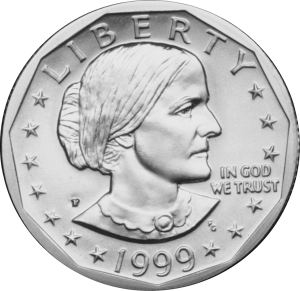
-
Obverse of the Susan B. Anthony Dollar
-

-
The 2000 Cheerios Dollar
Modern coins do not get the same love as some of the classics. Aside from not containing silver, there have been controversies over designs (see the “spaghetti hair” that George Washington was sporting on the 50 State Quarters) and how the relief on coins has been lowered by the U.S. Mint in an attempt to extend die life.
Some not-so-great designs
-

-
Obverse of the 50 State Quarters with Washington’s spaghetti hair
-
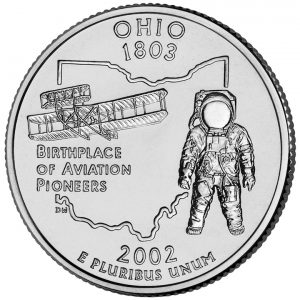
-
2002 Ohio Quarter with the hanging astronaut
-
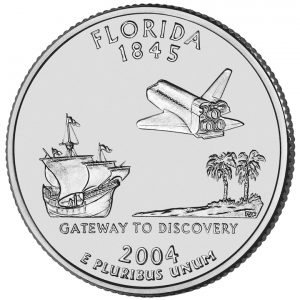
-
2004 Florida Quarter with a jumble of stuff
Although people love the classic designs two of my favorite designs of the modern era is the Drummer Boy reverse on the Bicentennial quarter and the Thomas Jefferson portrait on the obverse of the 2005 Westward Journey nickels. And even though I have not written much about them, there are some fantastic designs in the America the Beautiful Quarters series. A few that you may want to take a second look at include 2017 Ellis Island, 2017 George Rogers Clark National Historic Park, 2016 Shawnee National Forest, and the 2015 Blue Ridge Parkway quarters just to name a few.
A few of the great America the Beautiful Quaters designs
-
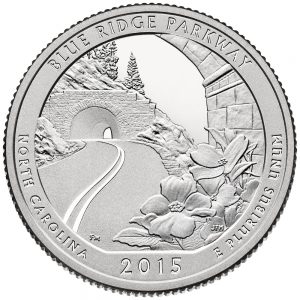
-
2015 Blue Ridge Parkway – North Carolina
-

-
2016 Shawnee National Forest – Illinois
-

-
2017 Ellis Island – New Jersey
-
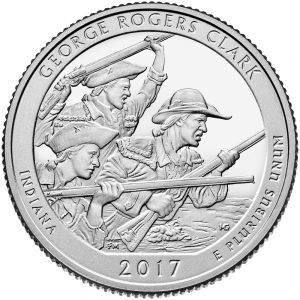
-
2017 George Rogers Clark National Park – Indiana
Sitting with a Red Book, I started to list the coin types that would make up a modern type set. If we limited the set to circulating coins (e.g., not including half-dollars and one-dollar coins) that can be found in pocket change, there would be 128 coins with a face value of $28.97.
| Type |
No. in Series |
Face Value |
Series Value |
| Lincoln Memorial Cents |
2 |
0.01 |
0.02 |
| Lincoln Bicentennial Cents |
4 |
0.01 |
0.04 |
| Lincoln Shield Censt |
1 |
0.01 |
0.01 |
| pre-2004 Jefferson Nickels |
1 |
0.05 |
0.05 |
| Westward Journey Nickels |
4 |
0.05 |
0.20 |
| Return to Monticello Nickels |
1 |
0.05 |
0.05 |
| Roosevelt Dimes |
1 |
0.10 |
0.10 |
| Washington Quarters |
1 |
0.25 |
0.25 |
| Bicentennial Quarters |
1 |
0.25 |
0.25 |
| 50 State Quarters |
50 |
0.25 |
12.50 |
| D.C. and U.S. Territories Quarters |
6 |
0.25 |
1.50 |
| America the Beautiful Quarters |
56 |
0.25 |
14.00 |
| Total |
128 |
1.53 |
28.97 |
The above table does take into consideration the entire 56 Amercia the Beautiful Quarters series including future issues. The kids have to understand the concept of future issues and maintain space for these coins in their album.
Starting the set with pocket change allows the kids to get used to the concept of looking at the coins to understand what they are looking for. To help with their search each child was given a Red Book and two apps on their iPads: PCGS CoinFacts and PCGS Photograde. They can use the Red Book as a handy off-line reference but use PCGS CoinFacts to learn more when they have access. Photograde is very useful to help them assess the condition of the coins.
While collectors have a basic understanding of coin grading, getting it right can be difficult. These kids were given a basic lesson on things to look for when trying to assess the condition of the coins they find. It will be interesting to see how they interpret this information.
Once we covered coins that can readily be found in circulation, we then discussed the other business strikes that are usually not found in ordinary pocket change.
After an interesting discussion, it was decided to make those a separate collection.
As a separate collection, this will give the kids an opportunity to go to dealers and coin shows to allow the kids to learn about buying coins in this environment. They will learn how to talk with a dealer, gain experience negotiating, and do some comparison shopping. It will let them get the experience and see different coins but maintain a collection discipline that will allow them to learn to collect on a budget.
What are the modern type coins that do not see a lot of circulation? Once again, I sat with the Red Book and came up with the following list:
| Type |
No. in Series |
Face Value |
Series Value |
| Kennedy Half Dollars |
1 |
0.50 |
0.50 |
| Bicentennial Kennedy Half Dollar |
1 |
0.50 |
0.50 |
| Eisenhower Dollars |
1 |
1.00 |
1.00 |
| Bicentennial Eisenhower Dollars |
2 |
1.00 |
2.00 |
| Susan B. Anthony Dollars |
1 |
1.00 |
1.00 |
| Sacagawea Dollars |
1 |
1.00 |
1.00 |
| Native American Dollars |
11 |
1.00 |
11.00 |
| Presidential Dollars |
39 |
1.00 |
39.00 |
To complete the task, I came up with a checklist for all of the modern coins in two formats. One is a printed version that they could keep in their pocket as they go about their day. The other is a spreadsheet that can act as an official record. The paper version is a very basic PDF file that can be used to write notes. The spreadsheet offers more information. It also allows them to come up with their own catalogue.
Both files are attached for you to use (see the Creative Commons Attribution-NonCommercial-ShareAlike 4.0 International License for text of the permissions granted with this release).
It will be interesting to see what these kids do!
Checklists
Modern Coinage Type Set Checklist
Modern Coin Type Set Detailed Checklist
Aug 19, 2017 | currency, fun
You need a quick amount of cash. After all, not every transaction can be made with a credit card. You hop in the car and drive to the bank to use the ATM. Within seconds, the machine spits out money and you drive away.
Early the next morning you look at the bills and notice that not only are they crisp new $20 Federal Reserve Notes but they are in sequence. A closer look and you think that you might have a good Liar’s Poker hand.
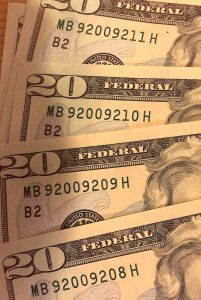
An ATM find: A Sequence of $20 Federal Reserve Notes
Then you take a closer look at the serial number and think you might have stumbled on something. That is when you realize that you might need to take that prescription from the ophthalmologist to a store and get your glasses changed!
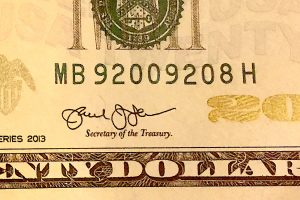
Eight notes sooner and I would have picked up a $20 Federal Reserve Note with a cool serial Number!
Although a decent Liar’s Poker hand (a full-house), I almost had a repeater. Had I made to the ATM sooner, I could have found the note with a 4-digit serial repeater. Then, if the rest of the notes were in sequence, I would have sacrificed to go back for more money. After all, there would be someone who would be interested in buying serial number “92009200” and maybe the succeeding notes!
Now I am stuck hoping to win the $535 million after spending number “92009212” on Powerball tickets.
May 16, 2017 | fun, tokens
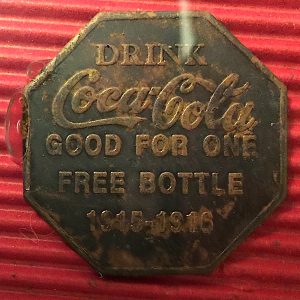
Token for a free bottle of Coca-Cola in 1915-16
As I was sorting through the collection, I found a frame with an octagonal token “Good for one free bottle” of Coca-Cola dated 1915-1916. The token is in pretty decent shape although has been well handled. The problem is that it appears to be glued to the backing. The back of the frame also has writing indicating that it was a gift to the former owner.
I have seen similar tokens before, such as the Colgate-Palmolive-Peet token I previously wrote about, but never on for Coca-Cola. I am sure that these are relatively common for advertising tokens.
For a Coca-Cola collector, it is a nice gift. For a numismatist interested in the token, I am worried that such a piece may be damaged. Before I decide whether to free the token from its frame, I have to decide whether it would be better sold as a framed item or with the token. I also have to decide whether I want to keep this token!
I better be careful because if I keep finding all of these fascinating advertising tokens I might end up keeping them and starting a collection.

Full framed image of the Coca-Cola advertising toen
Apr 30, 2017 | coins, foreign, fun

A glance into my booth at DC Big Flea
One thing I like about this business is the variety of items that you can find. Aside from the various antiques and collectibles, there are a lot of interesting numismatic items that you may not find at a coin dealer’s table at almost any show. Most of these are not high priced items but are very interesting. For example, while Love Tokens can bring a nice premium, only a few specialized dealers would carry them. Since most of the dealers are also pickers. They will buy all of this stuff and bring it to a show like this.
A couple of smamples that I missed taking pictures of includes someone who had a coffee cup full of buffalo nickels for 25-cents a coin. After searching through most of the coins, all of them had at least a partial date. Not a dateless coin to be found. Another dealer was selling circulated Morgan dollars in VG-to-XF condition for $20 a coin, which is pretty good since the catalog value of most of these coins are $25-45 each. Current melt value of Morgan dollars is a little more than $14.
Although I do not have coins in my inventory at this show, you could have come by and bought a Red Book from one of the contributors, cheap!
Here are the pictures uploaded directly from my iPhone:
-
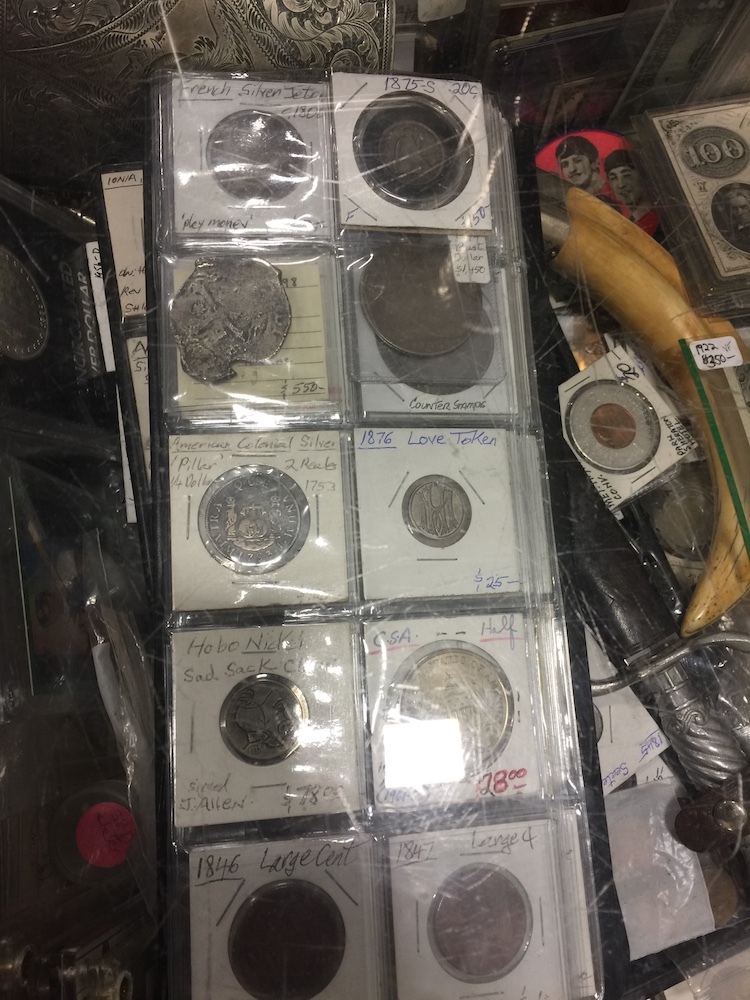
-
Page of odds and ends including a hammered coin, love token, and Hobo Nickel
-

-
A $100 Confederate States of America note
-
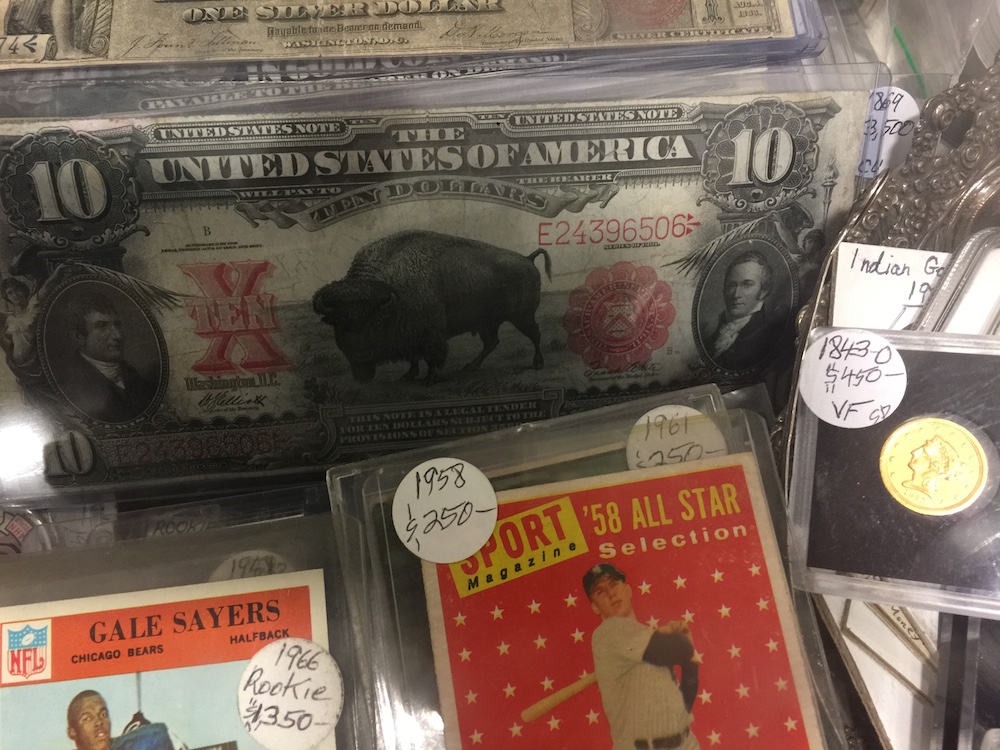
-
1901 $10 Dollar Lewis and Clark Bison note (Fr# 122), Elliot-White
-

-
A small selection of Love Tokens
-
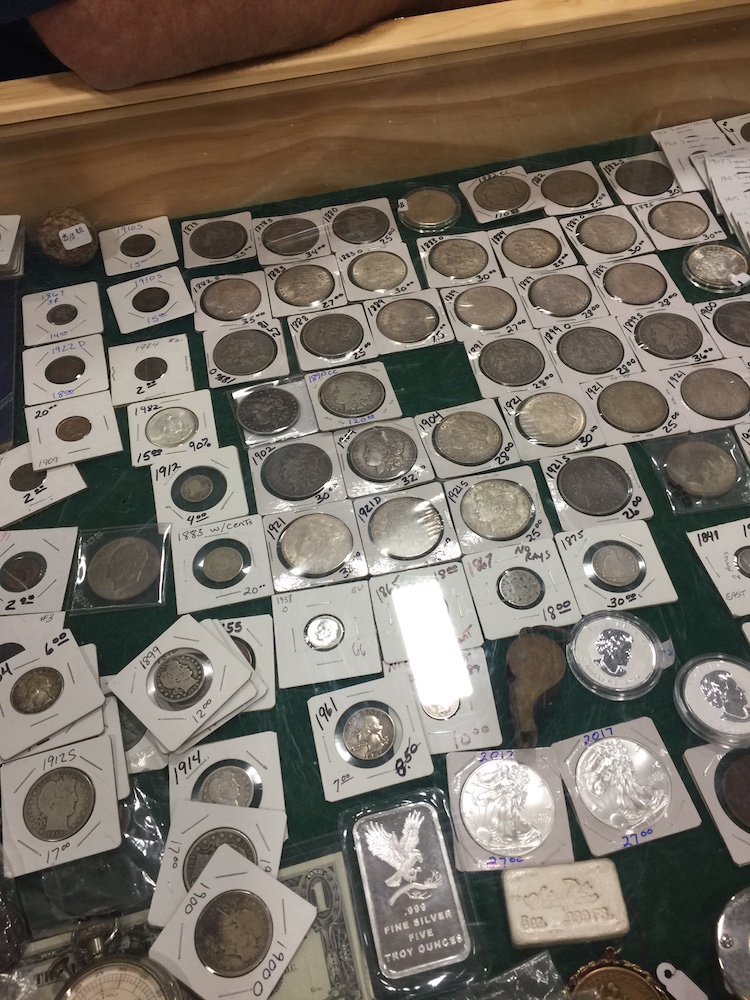
-
Lots of silver dollars and many at very good prices
-
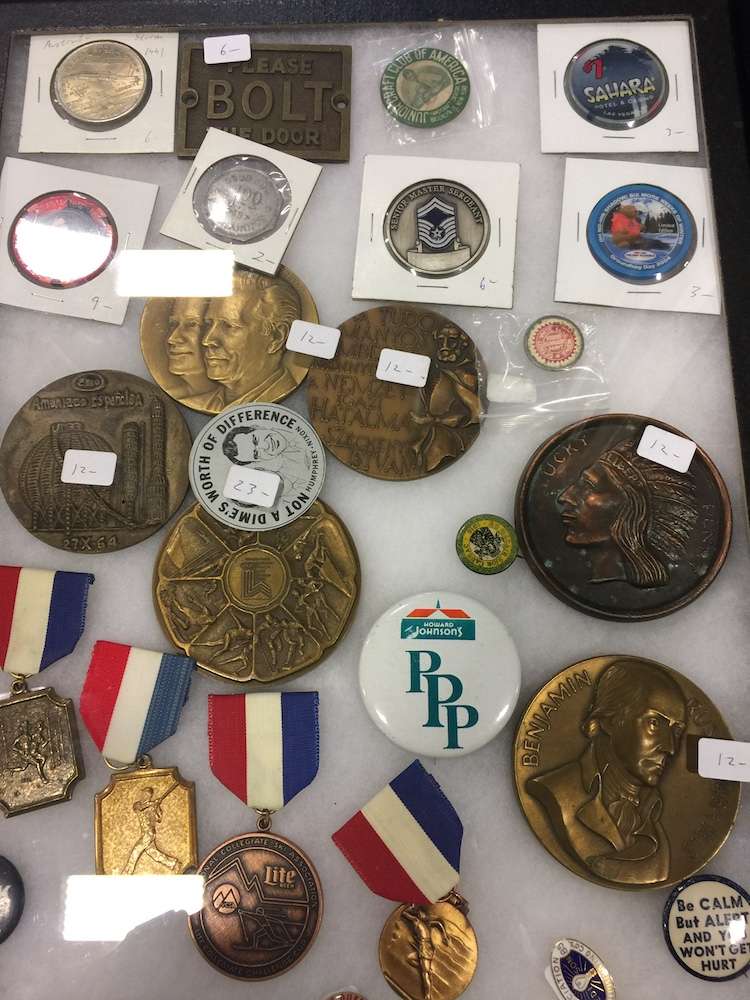
-
Medals, awards, casino chips, and a Challenge Coin
-

-
Casino chips and challenge coins make for an interesting display option!
-

-
Some decent Buffalo Nickels, although some of these prices are a little high for their condition
-
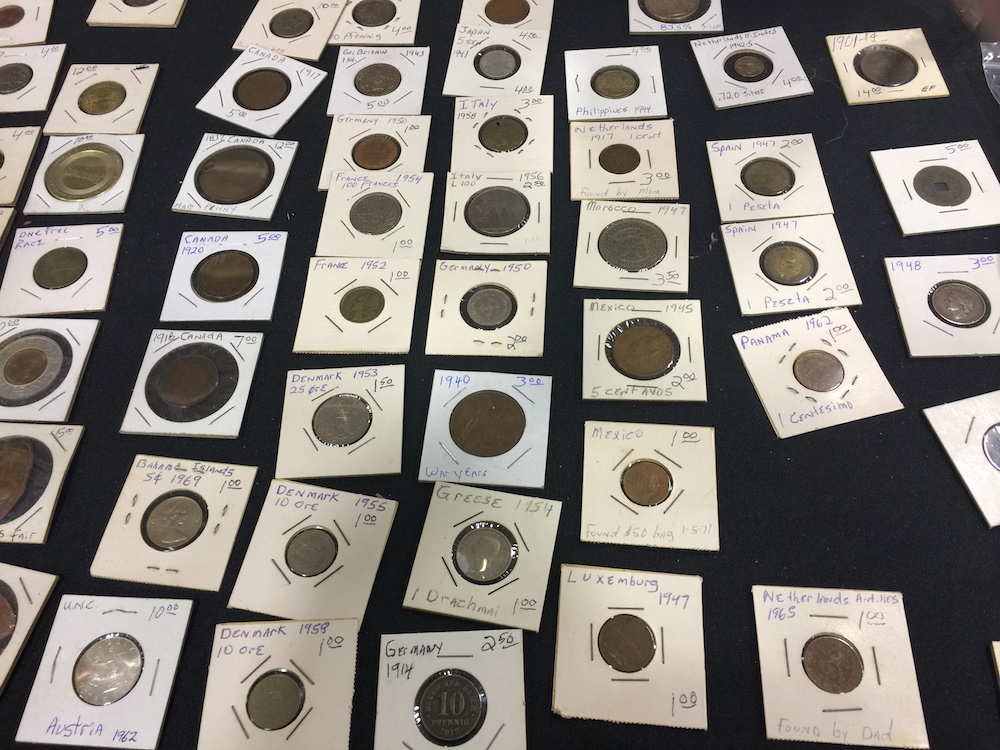
-
A layout of foreign coins. I bought the 1920 Canada Large Cent to the left
-
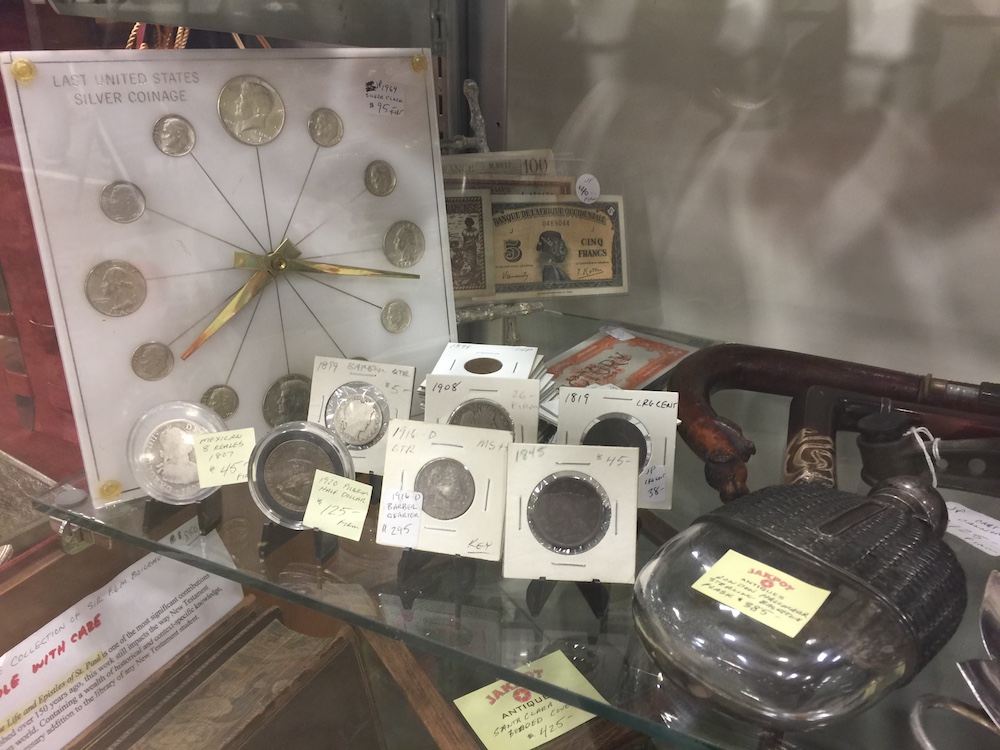
-
The clock on the left is an old Capital Plastics holder. It is the first time I have seen one.
-
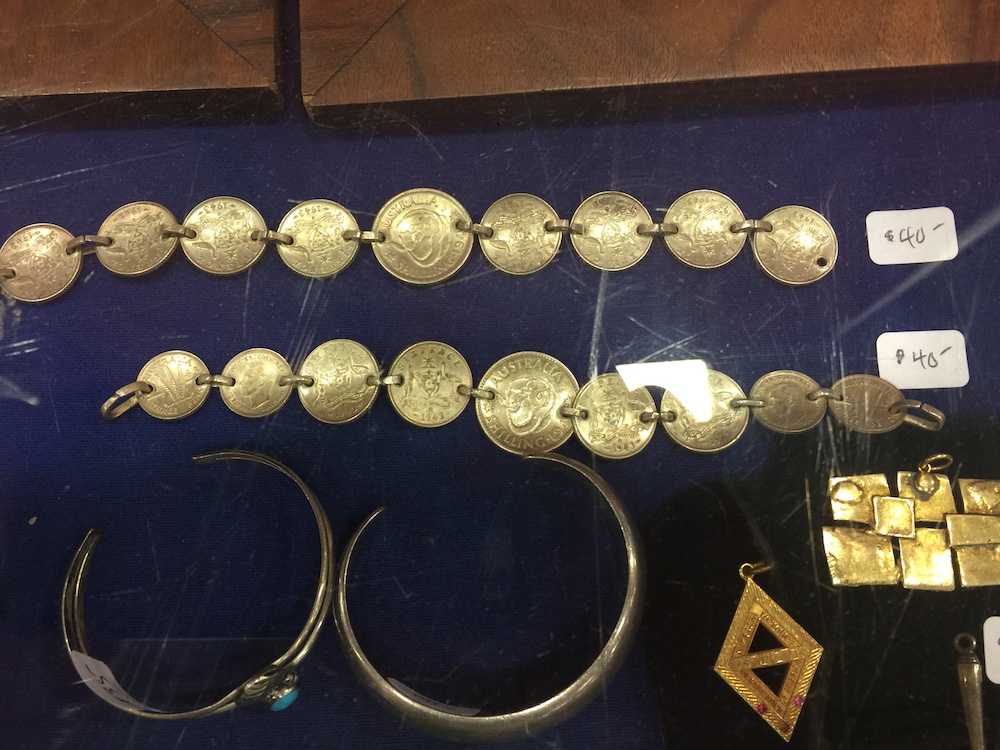
-
Bracelets are made from Australian pre-decimalisation coins that have been gold plated
-
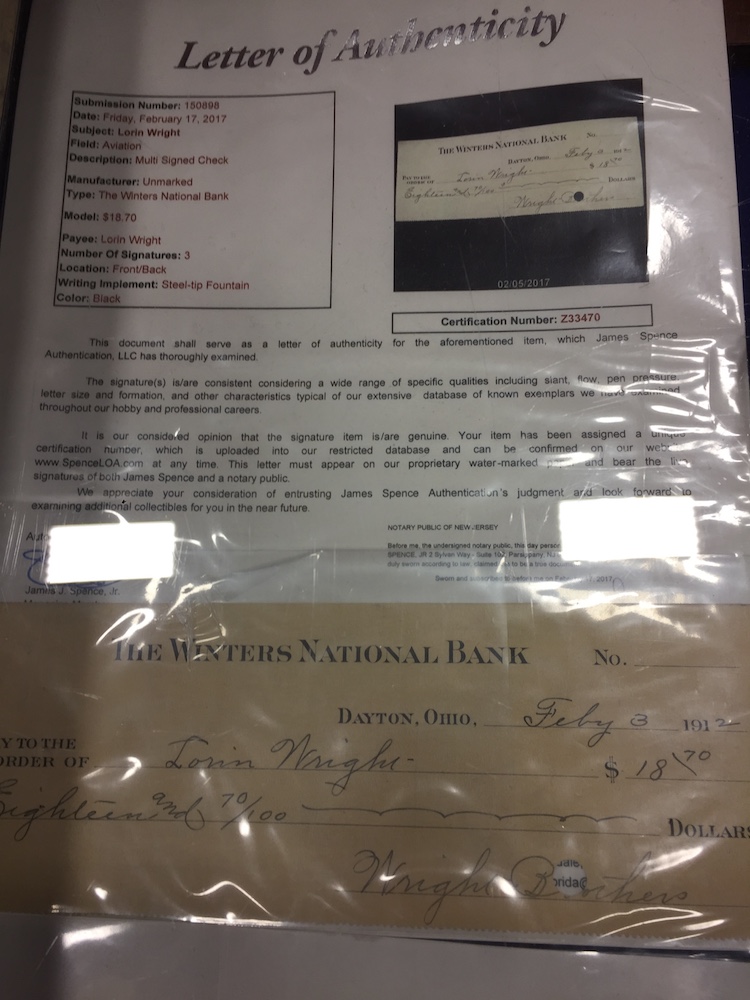
-
Check written to Lorin Wright from her brothers. Lorin Wright endorsed the check on the reverse.
-
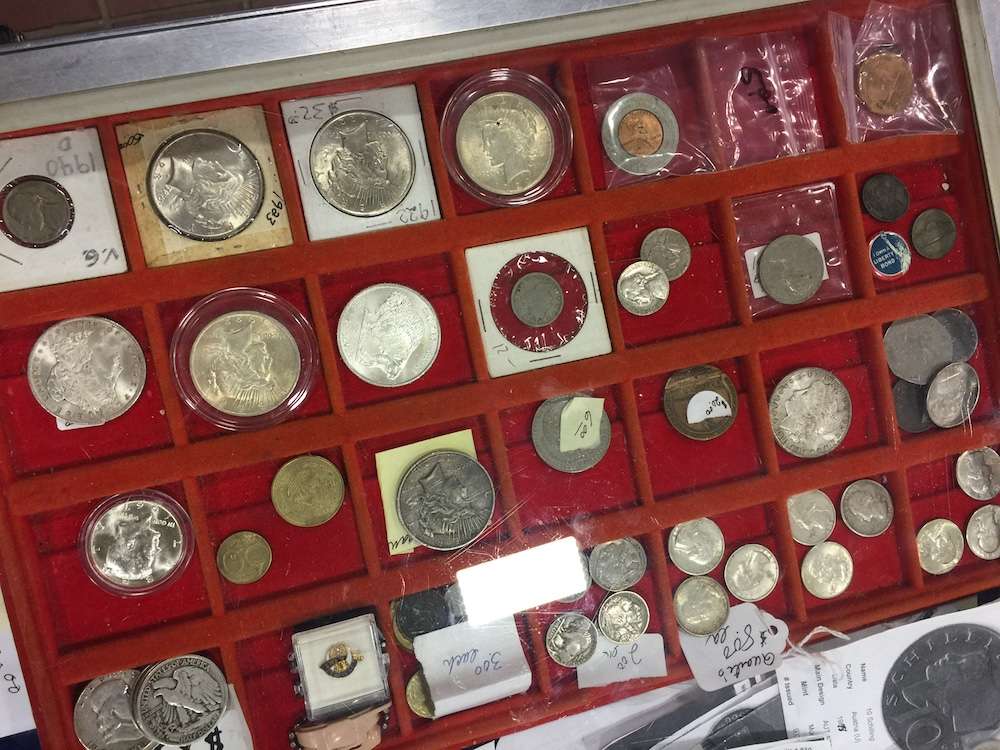
-
Tray of miscellaneous coins.
Feb 18, 2017 | coins, fun, US Mint
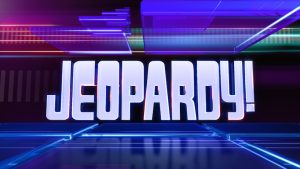 As seen on the Friday, February 17, 2017 edition of Jeopardy!
As seen on the Friday, February 17, 2017 edition of Jeopardy!
(contestant) Government agency for 600.
Alex: It says it’s “connecting America through coins.”
(contestant buzzes in) “What is the Treasury?”
Alex: No, sorry. Anyone else?
(silence) BEEP-BEEP!
Alex: What is the U.S. Mint.
This was the last of the quarter-finals of the Jeopardy! College tournament. One would think that even if you were not in tune with the working of the U.S. Mint like we collectors that the word “coins” would be a big enough clue. At least one person had the right department!
It’s the weekend and the weather is warming here. I won’t get into a “get off my lawn”-like rant!
Jeopardy! hero graphics courtesy of Sony Pictures Entertainment.
Feb 16, 2017 | coins, foreign, fun, silver
A few weekends ago, I was out picking when someone offered to sell a box of lapel pins and buttons. Most of the buttons were modern political mainly from the 1988 election through the 2008 election. There was a mix of both major parties along with a number of local and state races, primarily from Virginia.
The box was nothing remarkable. It was originally for high-priced basketball shoes from a well-known company in the western United States. Alongside many of the political buttons were lapel pins and some sports pins. I also noticed some buttons with cute sayings. While being stuck in the fingers I was thinking that I could buy the box and use it as junk filler at a show. Just like coin dealers have junk boxes, those of us in other collectible areas have our versions of junk boxes. In this case, I can lay them out in felt-lined trays and let buyers pick over them for a dollar each.
Flag and ribbon pins always sell. So do buttons that say, “I usually don’t wake up grumpy, I sometimes let him sleep.” This gets the ladies to laugh and look at some of my other items.
After setting up the card table I use to work on this type of sorting, I dumped the box in the middle of the table. Expecting to have to sort through a few hundred pins and buttons when I noticed a 2×2 flip on top of the pile. It was a coin sitting that was sitting in the bottom of the box now at the top of the list of things to look at.
At first glance, I noticed it was not a U.S. coin and thought that it just could be an uncirculated copper-nickel coin until I looked closer. Shifting my glasses to get a better view there was no mistaking the reverse design as a Mexican Liberatad. The 1984 Libertad is clearly marked “1 ONZA PLATA PURA” (1-ounce pure silver) with the obverse declaring it from “ESTADOS UNIDOS MEXICANOS” (United States of Mexico).
I found a beautiful, uncirculated 1984 Mexico Libertad worth more than what I paid for the box!
-
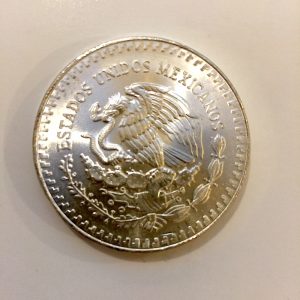
-
Obverse of a 1984 Mexico Libertad
-

-
Reverse of a 1984 Mexico Libertad
-
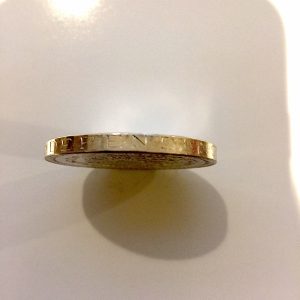
-
Edge lettering on a 1984 Mexico Liberdad
Although I love large silver coins, I have never owned a Libertad. Did you know that the edge of the Libertad has edge lettering? It reads “INDEPENDENCIA Y LIBERTAD” (Independence and Freedom). The distinctive mintmark of the Mexico Mint is on the reverse and has an overall great look.
I almost did not buy the box!
Jan 25, 2017 | coins, foreign, fun, video
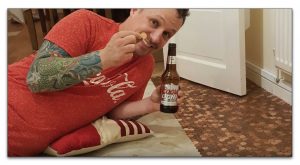 Let’s have some fun rather than talk about the mundane! Covering floors, cars, or any other surface using coins is not something new, but according to Matt Giles this has not been done in the United Kingdom. On the YouTube page where the video is posted, he writes:
Let’s have some fun rather than talk about the mundane! Covering floors, cars, or any other surface using coins is not something new, but according to Matt Giles this has not been done in the United Kingdom. On the YouTube page where the video is posted, he writes:
When thinking about what to lay in the kitchen Amy came up with a fantastic idea inspired by what she had researched online. We saw a bunch of penny floor projects in the USA, it seemed a really popular way of creating a bespoke retro floor for any part of the house, but wasnt done in the UK. Challenge accepted!
We took 27,000 1p coins and decided to give our kitchen diner a new look. Each coin was individually glued to the floor which had been self levelled before hand and left to dry. After gluing down all the coins a black grout was applied to fill the gaps followed by a high gloss epoxy resin to cover and seal.
The end result is simply awesome. The floor looks stunning and the weeks of hard work has been worth the pain.
Seems like an inexpensive idea. Take £270 in pennys (yes, that is how the Brits spell the plural of penny), glue, grout, apply a high gloss epoxy resin, and take about two weeks of work to come up with something different. For anyone curious, £270 is currently equivalent to $337.88.
Maybe his video will inspire your creativity!
Nov 25, 2016 | advice, fun, gold
As the weather turns colder and the fowl shudder for other reasons, we turn our thoughts to what to give as gifts. As numismatists, we can always find something based on the hobby that would be nice and maybe spark interest in collecting. Or we can find something fun that is somewhat related for those we know will never be converted.
We begin the weekend that starts with Black Friday and extends to Cyber Monday, terms that have little meaning these days except as marketing mechanism, if we are not going to fight the crowds at least we can plan.
My planning began two weeks ago when I wanted to do something different for my coin club’s December meeting. As the club greeter, I set up a table at the door to give away tickets for door prizes and sell raffle tickets. Door prizes are usually low-value foreign coins or an unusual U.S. coin, such as one with a minor error. Since I am responsible for selecting the door prizes, I try to follow a theme and include at least one coin containing silver. The raffle is usually a small gold coin or a silver crown-like coin, depending on what the club treasurer can find.
Our December meetings are special in that it is our annual charity auction. Members donate items to the auction and everyone in attendance bids for what they want. All proceeds are donated to a local charity. This has been a club tradition dating back to its founding in 1959.
While thinking about the door prizes and raffle, I was scanning online auctions looking for ideas. One idea came when I stumbled across currency-like notes with holiday themes. When I found a $1 million note with “A Blue Christmas with Elvis” I knew I found a door prize. Since I was buying two for the coin club, I bought a few more to include in greeting cards that I will be mailing this year.
To be inclusive, the next search was to look for Chanukah currency. Although the selection was not as varied as the Christmas notes, I found one that looked nice and was going to satisfy the coin club and be added to my holiday cards.
Then my thoughts turned to the raffle. We try to raffle gold coins whenever we can buy them at a cheap enough price. However, with the price of gold over $1,200 per troy ounce and over $189 higher than it opened in January, finding something affordable was not easy. As I was searching I found a listing for 1-grain bars mounted on holiday-related cards. I know that 1 grain is not a lot of gold. In fact, it comes out to about $2.50 in gold. But to buy four at $5 per card to donate for the raffle where the proceeds go to charity, that would be something different.
After purchasing the four cards, I started searching for other gold bars and found everything from one-third of a gram and heavier. Even with the current price of gold, finding special bars that could be purchased for $25 or less gave me an idea to buy a few to include in cards to special people.
Of course, this type of gift giving is not for everyone. But if you want to do something with a numismatic theme and make it look special for not a lot of money, think about buying these light gold bars. I think you will impress your gift recipient.







































 Let’s have some fun rather than talk about the mundane! Covering floors, cars, or any other surface using coins is not something new, but according to Matt Giles this has not been done in the United Kingdom. On the
Let’s have some fun rather than talk about the mundane! Covering floors, cars, or any other surface using coins is not something new, but according to Matt Giles this has not been done in the United Kingdom. On the 